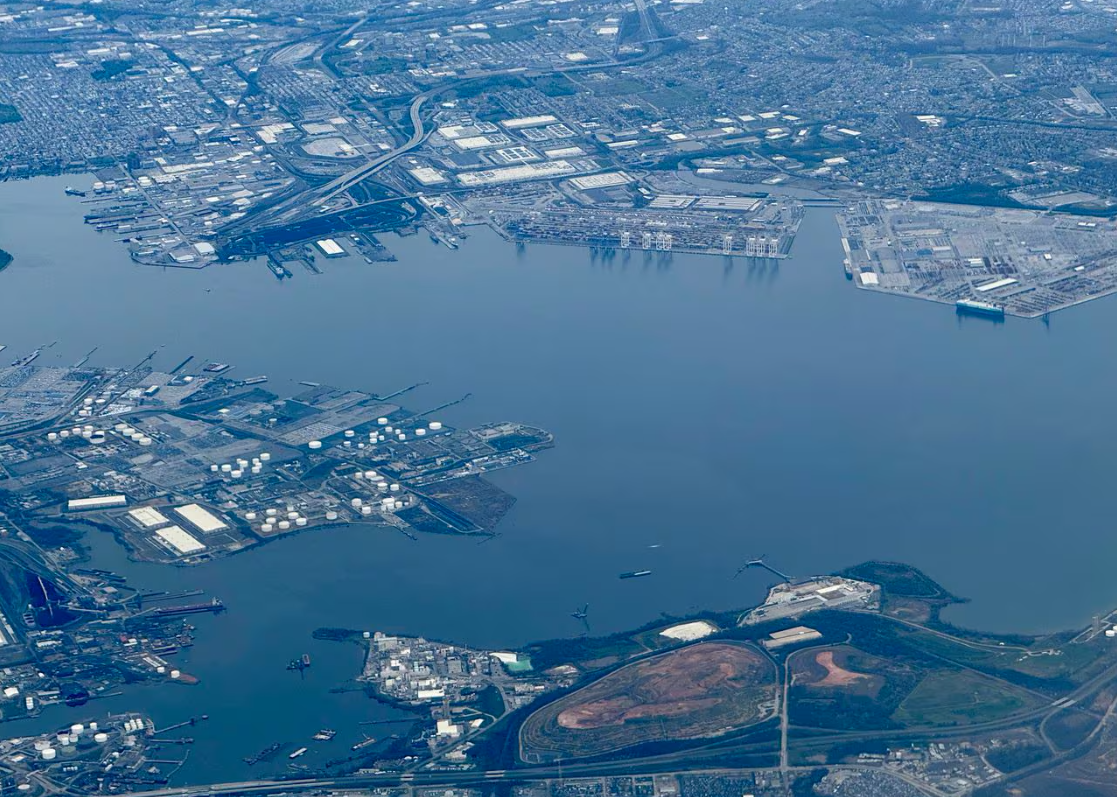巴尔的摩船舶事故导致东海岸港口争先恐后地吸收货物

【中美创新时报2024 年4 月 1 日讯】(记者温友平编译)东海岸沿线的港口正在调整其运营方式,以吸收从巴尔的摩港转移的货物,那里的打捞专家正在开始清理被摧毁的弗朗西斯·斯科特基大桥残骸的艰巨任务。彭博社记者布伦丹·默里(Brendan Murray)对此作了下述报道。
弗吉尼亚港的码头位于诺福克附近切萨皮克湾的入海口,该港将于周一凌晨 5 点(比平常早一个小时)开放大门,以帮助容纳更多的卡车司机。纽约和新泽西港预计将有包括汽车在内的更多货物,正在努力为通常途经巴尔的摩的运输公司提供快速通道。一家主要铁路也在扩大其服务。
上周致命的桥梁倒塌事件导致美国第17大港口(按货物总吨位计算)和最繁忙的车辆门户无限期关闭,预计随着邻近产能闲置的设施调整时间表,其影响将在很大程度上得到遏制。混乱、延误和增加的成本更有可能出现在港口之外,因为数以万计的货物需要在已经拥挤的公路和铁路线上更长的路线。
数字货运平台 Flexport Inc. 国际业务总裁桑尼·曼德斯 (Sanne Manders) 表示:“东海岸的港口可以轻松吸收集装箱贸易带来的直接后果。” “长期的后果可能会更加严重,因为即使你把港口的碎片运走,那也是一座极其重要的桥梁,作为通往港口的支线,交通将不得不改道很长很长的一段路。”
总部位于佛罗里达州的铁路公司 CSX Corp. 表示,它开始提供铁路服务,旨在将巴尔的摩的货物从纽约转移出去。
根据国际货币基金组织 PortWatch 平台的分析,纽约州诺福克和南卡罗来纳州查尔斯顿通常是按定期航线离开巴尔的摩的货船的下一个目的地。这使得它们最有可能在短期内吸收更多进口产品。
根据彭博社汇编的卫星跟踪数据,截至周日,波士顿和杰克逊维尔之间的 10 个港口外停泊着 29 艘散货、集装箱和车辆运输船,而周六则有 18 艘。
交通部长皮特·布蒂吉格周日表示,虽然目前还没有重新开放巴尔的摩海峡的时间表,但巨型起重机已经到位,开始拆除大桥上的残骸。他在哥伦比亚广播公司的《面对国家》节目中表示,“对于我们的国家供应链来说,尽快恢复并运行该港口”非常重要。
马里兰州州长韦斯·摩尔表示,港口关闭将对该国东部地区产生连锁反应。 他在 CNN 的国情咨文节目中表示:“这个港口是美国最繁忙的港口之一,因此这将影响肯塔基州的农民、俄亥俄州的汽车经销商以及田纳西州的餐馆老板。”
包括纽约和弗吉尼亚州在内的门户的处理量比疫情高峰期间减少了约 20%,这让官员们相信他们有额外的能力来避免长期瓶颈。
如果一切按计划进行,通常在巴尔的摩预订接送服务的卡车司机本周应该可以在该地区其他地方的码头进行预约。
尽管对经济的影响相对较小,但这是全球互联中心遭受供应链冲击的又一鲜明例子,企业董事会和政界对增强韧性和自给自足的必要性感到不寒而栗。
世界各地都感受到了这种震动,包括为躲避红海胡塞武装袭击而绕非洲航行的船只,或者因干旱而延误的巴拿马运河。
题图:周日巴尔的摩港的鸟瞰图。 上周致命的桥梁倒塌导致该国货运总量第 17 大港口和最繁忙的车辆门户无限期关闭。 DANIEL SLIM/法新社 VIA GETTY IMAGES
附原英文报道:
Baltimore ship accident has East Coast ports scrambling to absorb cargo
By Brendan Murray Bloomberg,Updated March 31, 2024
Aerial view of the port of Baltimore on Sunday. Last week’s deadly bridge collapse indefinitely closed the nation’s 17th-largest port by total cargo capacity and the busiest gateway for vehicles.DANIEL SLIM/AFP VIA GETTY IMAGES
Ports along the East Coast are modifying their operations to absorb cargo diverted from Baltimore Harbor, where salvage specialists are starting the daunting task of clearing debris from the destroyed Francis Scott Key Bridge.
The Port of Virginia, with terminals at the mouth of the Chesapeake Bay near Norfolk, is opening a gate Monday at 5 a.m. — an hour earlier than usual — to help accommodate more truckers. The Port of New York and New Jersey, which is expecting additional cargo including autos, is working to allow quick access for transport companies that usually go through Baltimore. A major railroad is expanding its services, too.
Fallout from last week’s deadly bridge collapse, which indefinitely closed the nation’s 17th-largest port by total cargo tonnage and the busiest gateway for vehicles, is expected to be largely contained as neighboring facilities with spare capacity tweak their schedules. Snarls, delays, and added costs are more likely to appear outside ports as tens of thousands of shipments require longer routes on already-crowded roadways and rail lines.
“The ports on the East Coast can easily absorb the immediate aftermath on containerized trade,” said Sanne Manders, president of international operations at Flexport Inc., a digital freight platform. “The longer-term aftermath will probably be more severe, because even if you take away the debris from the port, that is an extremely important bridge as a feeder into the port, and traffic will have to reroute a long, long way.”
CSX Corp., the Florida-based railroad, said it’s starting to offer a rail service designed to move diverted Baltimore freight from New York.
Norfolk, New York, and Charleston, S.C., are most often the next destination for cargo ships leaving Baltimore on scheduled routes, according to an analysis from the International Monetary Fund’s PortWatch platform. That makes them the likeliest to absorb more imports in the short term.
As of Sunday, there were 29 bulk cargo, container, and vehicle carriers anchored outside 10 ports between Boston and Jacksonville, compared with 18 on Saturday, according to satellite tracking data compiled by Bloomberg.
While there’s no timeline yet for reopening the Baltimore channel, giant cranes are being put in place to begin dismantling wreckage from the bridge, Transportation Secretary Pete Buttigieg said Sunday. It’s important “to our national supply chains to get that port back up and running as quickly as possible,” he said on CBS’s Face the Nation.
Maryland Governor Wes Moore said the port closure will have ripple effects across the eastern part of the country. “This port is one of the busiest inside the country, so this will impact the farmer in Kentucky, and the auto dealer in Ohio, and the restaurant owner in Tennessee,” he said on CNN’s State of the Union.
Gateways, including New York’s and Virginia’s, are handling about 20 percent less volume than they were during their pandemic peaks, leaving officials confident they have the extra capacity to avoid extended bottlenecks.
If all goes to plan, truck drivers who normally book pickup and drop-off appointments in Baltimore should be able to do so this week at terminals elsewhere in the region.
Though relatively small in economic impact, it’s another stark example of the kinds of supply-chain shocks to a globally connected hub that have sent shudders through corporate boardrooms and political circles about the need for more resilience and self-sufficiency.
Those kinds of jolts have been felt across the world, including by ships sailing around Africa to avoid Houthi attacks in the Red Sea, or delays transiting the drought-stricken Panama Canal.

